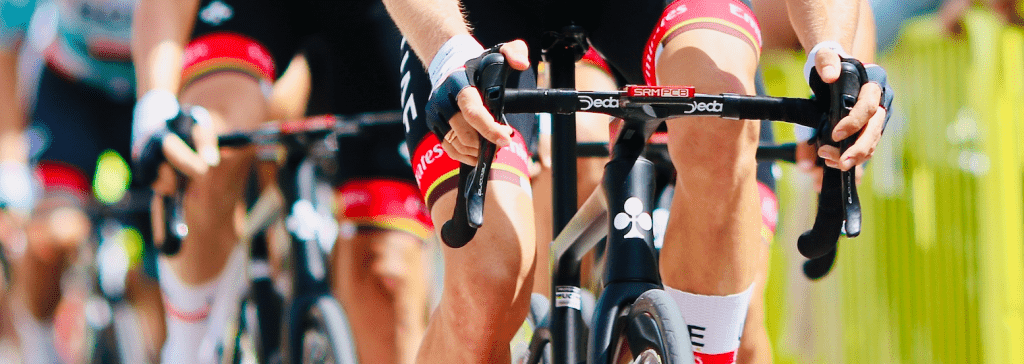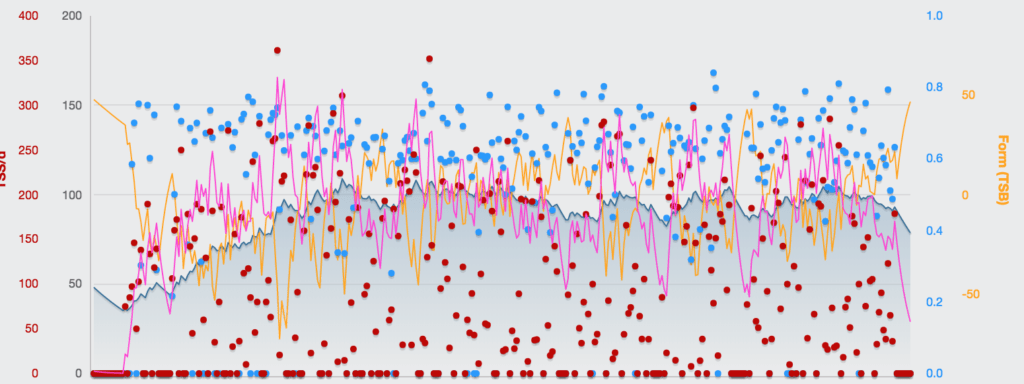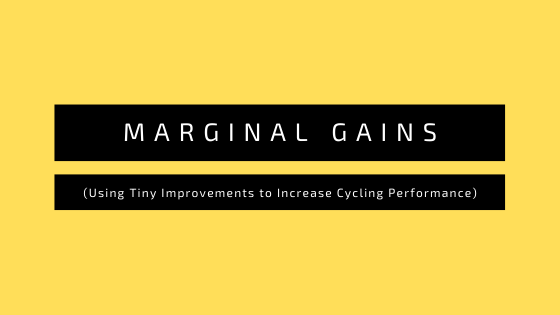Dave Brailsford introduced us to a new way of thinking when he entered the cycling scene with Team Sky and the principle of ‘marginal gains.’ The British cycling coach and manager has won seven out of the last eight editions of the Tour de France. Difficult not to consider if there is something we can learn from him.
The marginal gains theory is based on the idea that if you can find tiny improvements in many different areas, the combined effect can be huge.
It is a philosophy that you can easily use to achieve better results. Rather than obsessing over results, Brailsford believes in focusing on the process that leads to those results. By setting clear goals and breaking down the steps needed to achieve them, he believes that success will follow. This blog post will explain how you can implement and use marginal gains to your advantage.
What is the marginal gains theory?
When you add minor improvements, they can significantly improve when they are all added together.
When race cyclists, cycling coaches, and cycling experts evaluate cycling races, there is a strong tendency to look straight at the top of the podium.
There is a mantra called ‘the winner is always right.’
It is tempting to find inspiration from the best rider, and there is also a valid reason to pay attention: the winner crossed the line before everyone else. Brailford has had several victories on Champs-Élysées. Brailsford is a lifelong learner who constantly seeks out new knowledge and ideas. He encourages his teams to do the same, emphasizing the importance of being open-minded and adaptable in order to stay ahead of the competition.
However, the ‘winner is always right’ mentality may limit your creative process of improving your race performance.
It is clear that the 1st place probably did many things pretty well. However, the sum of all training, race-specific preparation, nutritional strategy, tactical moves, and technical performance made the winner cross the finish line before the peloton.
But if you split all the elements related to your race performance up in atoms, you will find places for improvements.

From a scientific perspective, you will have to accept that many minor tweaks are insignificant. Even if there is a tiny gain, for example, 0.5%, it is impossible to prove that there is an actual advantage, but the sum of all these small gains will, hopefully, make a competitive advantage.
First of all, you should focus long term.
Looking for many marginal gains is a philosophy that will not make considerable improvements in the short run.
There usually are no quick wins. It is no miracle cure.
Instead, this behavioral approach will secure significant and incremental improvements in the long term.
And it should be an ongoing process. So it would be best if you adapted to a routine that always aims to improve things. As you implement small gains, they will accumulate; over time, you will give yourself a clear advantage.
I had such a challenge in 2015 when I got the opportunity to coach Mads Würtz Schmidt, who had won the U23 world championship just two months before. But, seriously, what can be improved next season?
It is no secret that coaching the world champion is challenging but not so easy. All primary and advanced training advice has been redundant and implemented for several years. Nevertheless, nearly all professional riders know how to use solid training, nutrition, and recovery principles.
Building on all the great principles from previous seasons makes perfect sense when wearing the rainbow-colored jersey. Just imagine what people and the press expect from a rider who has just won the World championship. There are no good reasons to make significant changes. And lots of reasons to be blamed if the following season is unsuccessful.
So it is tempting just to hit the ‘repeat’ button and let him do the same repeatedly.
In such a situation, it makes sense to consider the concept of marginal gains. Minimal changes are not as scary to implement as larger ones. Who can say they have a significant negative influence if you make harmless minor adjustments?
So I decided to look for tiny improvements to help him improve further. And set a clear goal for the first season: a pro contract on the world tour.

My data analysis showed that adding more training volume and the total workload was possible, which is not surprising for a 21-year-old rider. There is logical, natural progress in training and total race volume for the most talented riders.
Even though you are among the best in your age group, you can add more to your training volume. Therefore, the most reasonable way to plan training is to make progress in training volume and add slightly more races (also more difficult races) to his calendar.
Secondly, all those minor improvements made sense from a theoretical point of view. These are ‘marginal gains.’
For example:
- Extended recovery time between sets during weightlifting
- Adding sessions with pace behind scooter as race preparation
- Lowering body weight for specific races
- Adding race-specific intervals according to the race calendar
- Heat acclimatization for certain events
- Altitude camps for better performance in altitude
- Aerodynamics in road bike and TT setup
And also, several small technical changes in race setup could positively influence performance (bike fitting tweaks, ceramic bearings, etc.) But, again, finding meaningful improvements that you believe will give you an advantage is a question.
Marginal gains theory at amateur level
A 360-degree analysis of every single process associated with Tour de France makes sense when you are Dave Brailsford. And it makes sense when I coach a 21-year danish rider who has just recently won the U23 world championships.
But what is the take-home message for you? The marginal gains theory also works at the amateur level, but it is crucial to remember to implement all the basics before looking for marginal gains.
It sounds tempting (and relatively easy), but please remember that everything else should be close to perfect (training volume, intensity, frequency, recovery, etc.)
If you think longer cycling socks will do the trick and make you MUCH faster, you will probably be disappointed using the marginal gains philosophy.
So get the basics right.
Then keep an eye out for areas where you can add tiny improvements to your cycling performance. Again, if you believe in what you do, there is a better chance of succeeding.
Finally, one excellent book for inspiration on marginal gains: Atomic Habits. It’s not a cycling-specific book, but it gives you many good examples of implementing strategies that will work as marginal gains.
Here are five actionable insights from “Atomic Habits” by James Clear that can help you improve as a road cyclist:
- Focus on small, consistent improvements. Instead of trying to make big changes all at once, focus on making small, incremental improvements over time. For example, aim to increase your average speed by 0.5 mph each month rather than trying to dramatically increase it all at once.
- Create a system for your cycling habits. A system is a set of processes or routines that you follow consistently to achieve a desired outcome. For example, you could create a system where you ride at the same time every day and track your progress in a training log.
- Make your habits specific and measurable. Rather than setting vague goals like “get better at cycling,” set specific, measurable goals like “improve my average speed by 1 mph within the next three months.” This will help you track your progress more effectively.
- Use habit stacking to build new habits into your routine. Habit stacking involves attaching a new habit to an existing habit so that they become linked together. For example, if you always have coffee before your morning ride, you could use that as a trigger to stretch for 10 minutes before heading out.
- Visualize yourself succeeding as a cyclist. Visualization can be a powerful tool for building confidence and motivation towards achieving your goals as a cyclist. Spend time visualizing yourself successfully completing challenging rides or races, and imagine how it will feel when you reach your goals.

